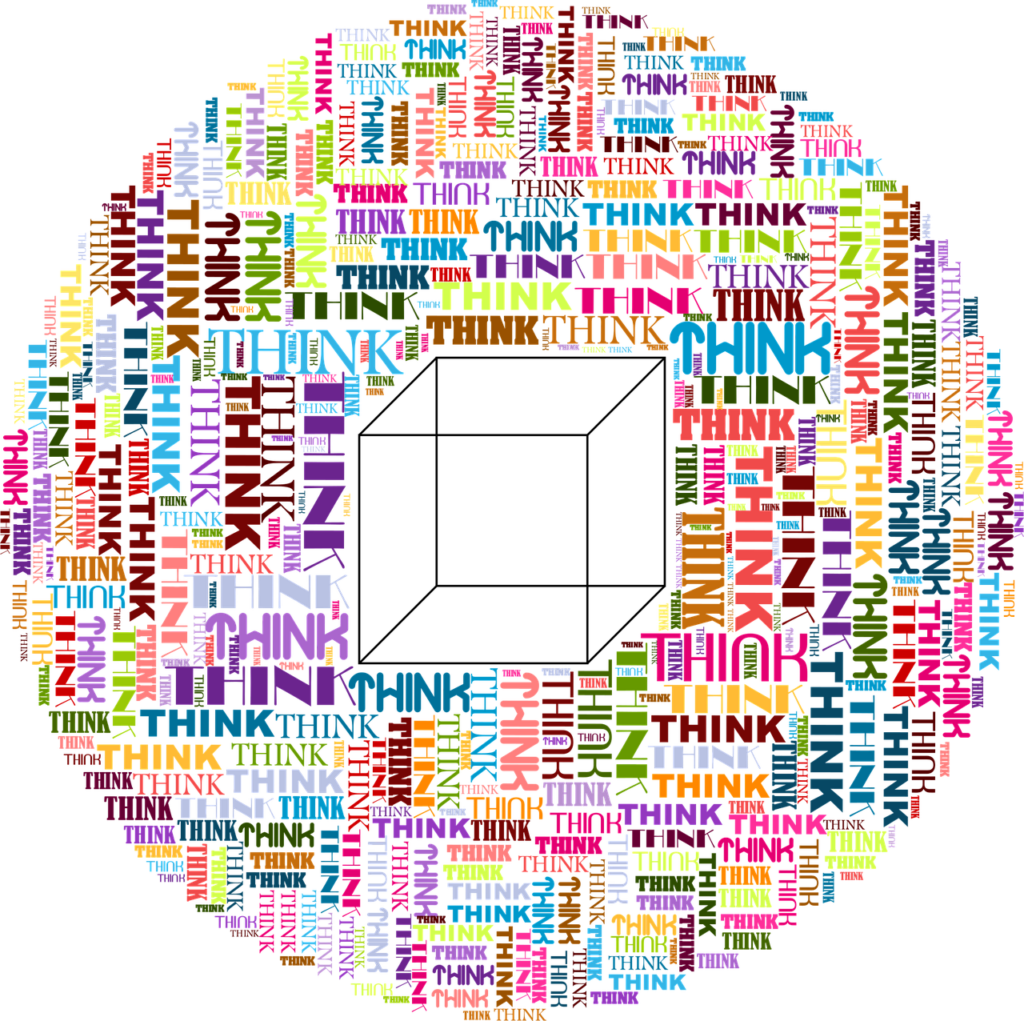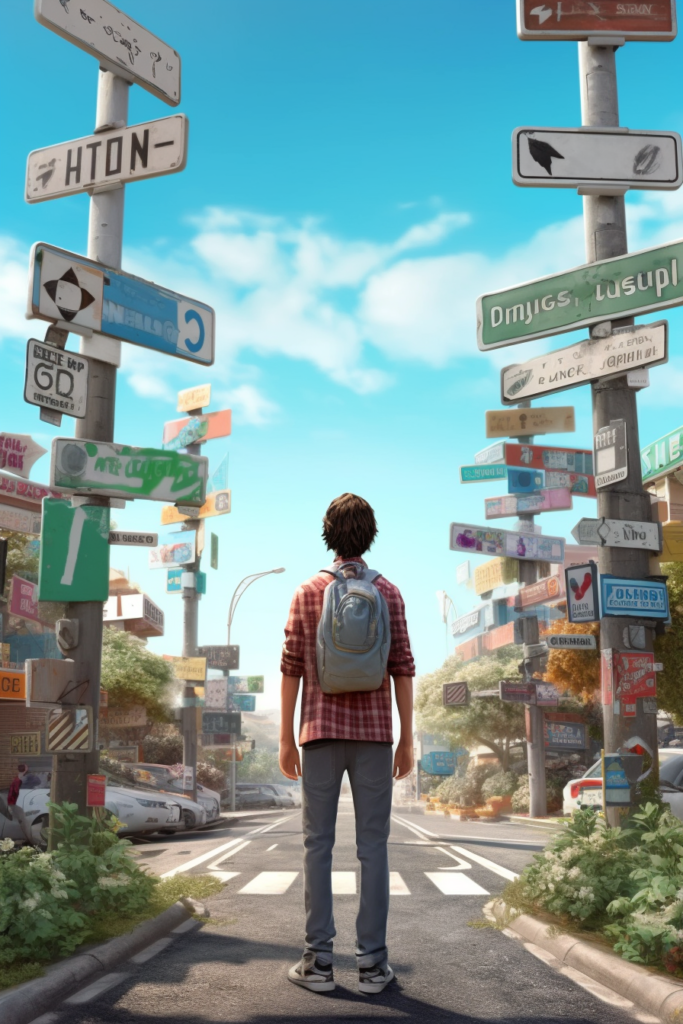At some point in our lives, we’ve all heard the phrase “think outside the box.” It’s a call to be creative, to break free from the constraints of conventional thinking, and to approach problems in new and innovative ways. But what does it really mean to think outside the box, and how can we cultivate this mindset to become more effective problem-solvers and innovators?
In this article, we’ll explore the concept of creativity and its link to problem-solving. We’ll discuss how to cultivate a creative mindset and overcome creative blocks, and we’ll explore the power of collective creativity through brainstorming and cross-pollination. We’ll also introduce tools and techniques for creative problem-solving and discuss how to nurture a creative environment. Finally, we’ll look to the future of creativity and innovation and what it means for us as individuals and as a society.
Key Takeaways
- Creativity is essential for effective problem-solving and innovation.
- Cultivating a creative mindset involves breaking free from conventional thinking and embracing failure as a catalyst for growth.
- Tools and techniques such as brainstorming and cross-pollination can help us approach problems in new and innovative ways.
Understanding Creativity
Creativity is a buzzword that is often thrown around in various contexts, but what does it really mean? In the context of problem-solving and innovation, creativity refers to the ability to generate novel and valuable ideas or solutions. It involves thinking outside the box and breaking away from conventional or routine ways of thinking.
Defining Creativity
There are many definitions of creativity, but one common definition is the ability to produce something that is both original and useful. Creativity is not limited to the arts or design fields but can be applied to any area that requires problem-solving and innovation. It can be expressed in many forms, including visual art, music, writing, programming, and more.
The Science of Creativity
The study of creativity has been a topic of interest for many years, and researchers have uncovered some interesting findings about the creative process. One theory suggests that creativity involves the combination of different ideas or concepts to form something new. Another theory proposes that creativity is a result of divergent thinking, which involves generating many different ideas and then selecting the best ones.
Debunking Myths About Creativity
There are many myths about creativity that can hinder our ability to think creatively. One common myth is that creativity is an innate talent that some people are born with, while others are not. However, research has shown that creativity is a skill that can be developed and nurtured through practice and exposure to new experiences.
Another myth is that creativity only occurs when we are in a relaxed or positive state of mind. While it is true that positive emotions can enhance creativity, research has also shown that negative emotions can sometimes lead to more creative solutions.
Related Posts:
The Link Between Creativity and Problem-Solving
When it comes to problem-solving, creativity can be a powerful tool. By thinking outside the box and approaching problems with a fresh perspective, we can come up with innovative solutions that may not have been apparent before. In this section, we will explore the link between creativity and problem-solving, and how they work together to drive innovation.
Historical Examples
Throughout history, many of the greatest innovations have come from creative problem-solving. For example, the invention of the telephone by Alexander Graham Bell was the result of his creative thinking in response to a problem. He recognized the need for a better way to communicate over long distances and used his creativity to develop a solution.
Another example is the development of the airplane by the Wright brothers. They faced numerous challenges in their quest to achieve flight, but their creative problem-solving allowed them to overcome these obstacles and achieve their goal.
Role of Divergent Thinking
One key aspect of creative problem-solving is the use of divergent thinking. This involves generating a wide range of ideas in response to a problem, even if they may seem unconventional or unrealistic at first. By exploring a variety of possibilities, we can often uncover new and innovative solutions that we may not have considered otherwise.
Holistic and Sustainable Solutions
Creativity can also play a role in developing holistic and sustainable solutions to problems. By taking a broad view of a problem and considering its various impacts and stakeholders, we can develop solutions that not only address the immediate issue, but also have positive long-term effects.
For example, a company may use creative problem-solving to develop a sustainable product that reduces waste and has a minimal environmental impact. This not only benefits the company by reducing costs and improving their reputation, but also benefits society as a whole by promoting sustainability.
In conclusion, creativity and problem-solving are closely linked and can drive innovation in a variety of fields. By using divergent thinking and considering holistic and sustainable solutions, we can develop innovative solutions to even the most complex problems.
Cultivating a Creative Mindset
To solve complex problems and foster innovation, cultivating a creative mindset is crucial. In this section, we will explore some key aspects of cultivating a creative mindset.
Growth vs Fixed Mindset
Having a growth mindset is essential for developing a creative mindset. A growth mindset is the belief that abilities and intelligence can be developed through dedication and hard work. On the other hand, a fixed mindset is the belief that abilities and intelligence are predetermined and cannot be changed.
To cultivate a growth mindset, we need to embrace challenges, persist through obstacles, learn from criticism, and find inspiration in the success of others. By doing so, we can develop a sense of resilience and a willingness to take risks, which are essential for creativity.
Fostering an Open-Minded Approach
An open-minded approach is another key aspect of cultivating a creative mindset. Being open-minded means being receptive to new ideas and perspectives, even if they challenge our own. By doing so, we can expand our knowledge and understanding, and find new ways of thinking about problems.
To foster an open-minded approach, we need to be curious, ask questions, and actively seek out diverse perspectives. We also need to be willing to challenge our own assumptions and biases, and be open to changing our minds when presented with new evidence.
Importance of Curiosity
Curiosity is a driving force behind creativity. It is the desire to learn, explore, and discover new things. By cultivating curiosity, we can develop a sense of wonder and excitement about the world, which can inspire us to think creatively.
To cultivate curiosity, we need to be open to new experiences, seek out new information, and ask questions. We also need to be willing to take risks and try new things, even if we are unsure of the outcome.
Related Posts:
Brainstorming: The Power of Collective Creativity
Brainstorming is a powerful tool for generating new ideas, solving problems, and fostering creativity. When done effectively, it can lead to breakthroughs and innovations that can transform businesses and industries. In this section, we’ll explore some effective brainstorming techniques, the role of collaboration in brainstorming, and tools for virtual brainstorming.
Effective Brainstorming Techniques
Effective brainstorming requires a structured approach that encourages creativity and collaboration. Here are some techniques that can help:
- Mind Mapping: This technique involves creating a visual representation of ideas, with one central idea in the center and related ideas branching out from it. It’s a great way to explore different angles and perspectives on a problem or topic.
- Reverse Brainstorming: This technique involves flipping the problem on its head and brainstorming ways to make it worse. This can help identify potential obstacles and challenges, which can then be addressed in the actual brainstorming session.
- SCAMPER: This technique involves asking questions about each element of a problem or idea, using the acronym SCAMPER (Substitute, Combine, Adapt, Modify, Put to another use, Eliminate, Rearrange). This can help generate new ideas and approaches.
Role of Collaboration
Collaboration is key to effective brainstorming. When people with different backgrounds, perspectives, and expertise come together, they can generate a wider range of ideas and solutions. Here are some tips for fostering collaboration in brainstorming sessions:
- Establish Ground Rules: Set clear guidelines for the brainstorming session, such as encouraging all ideas, avoiding criticism, and building on each other’s ideas.
- Encourage Active Listening: Encourage participants to actively listen to each other and build on each other’s ideas.
- Assign Roles: Assign roles such as facilitator, note-taker, and timekeeper to keep the session on track and ensure everyone has a chance to participate.
Tools for Virtual Brainstorming
Virtual brainstorming has become increasingly popular, especially with remote work becoming more common. Here are some tools that can help facilitate virtual brainstorming:
- Mural: Mural is a digital whiteboard that allows teams to collaborate and brainstorm in real-time. It offers a range of templates and tools for visualizing ideas.
- Asana: Asana is a project management tool that includes a brainstorming feature. It allows teams to capture and organize ideas, and collaborate on them in real-time.
- Slack: Slack is a messaging platform that can be used for virtual brainstorming. It allows teams to create channels dedicated to brainstorming, and share ideas and feedback in real-time.
Brainstorming is a powerful tool for unlocking creativity and generating new ideas. By using effective techniques, fostering collaboration, and leveraging virtual tools, teams can harness the power of collective creativity to solve problems and drive innovation.
Overcoming Creative Blocks
Creative blocks are common and can prevent us from tapping into our creativity. This lapse in ability can decrease motivation for projects and cause self-doubt. However, there are ways to overcome creative blocks and get back into the creative flow.
Causes of Creative Stagnation
There are several reasons why we may experience creative blocks. These can include fear of failure, lack of inspiration, or feeling overwhelmed. Additionally, limiting beliefs can hinder our ability to come up with new ideas and solutions. Identifying the root cause of our creative stagnation can help us find effective solutions.
Techniques Like Mind Mapping
One technique that can help overcome creative blocks is mind mapping. This involves creating a visual representation of our thoughts and ideas. By organizing our ideas in a structured way, we can identify new connections and potential solutions. Mind mapping can also help us break down complex problems into more manageable pieces.
Role of Breaks
Taking breaks can also be an effective way to overcome creative blocks. Stepping away from a project and doing something else can help clear our minds and reduce stress. This can lead to new insights and fresh perspectives when we return to our creative work.
Related Posts:
Embracing Failure as a Creative Catalyst
When it comes to problem-solving and innovation, failure is often viewed as a roadblock. However, we believe that failure can be a powerful catalyst for creativity and growth. By embracing failure and learning from our mistakes, we can unlock new perspectives, ideas, and solutions.
Famous Failures
Many of the world’s most successful people have experienced failure on their journey to success. For example, Thomas Edison failed over 1,000 times before inventing the light bulb. Oprah Winfrey was fired from her first job as a TV anchor. J.K. Rowling was rejected by multiple publishers before Harry Potter became a worldwide phenomenon.
These famous failures remind us that setbacks and mistakes are a natural part of the creative process. By embracing failure and learning from our mistakes, we can develop the resilience and perseverance necessary to achieve our goals.
Concept of Failing Forward
The concept of “failing forward” emphasizes the importance of learning from our failures and using them as stepping stones towards success. Instead of viewing failure as a negative outcome, we can see it as an opportunity for growth and improvement.
To embrace the concept of failing forward, we must shift our mindset from one of fear and avoidance to one of curiosity and exploration. We must be willing to take risks, experiment with new ideas, and learn from our mistakes.
Building Resilience
Embracing failure as a creative catalyst requires resilience. Resilience is the ability to bounce back from setbacks, adapt to change, and persevere in the face of adversity.
To build resilience, we must cultivate a growth mindset and develop a sense of self-efficacy. We must believe in our ability to learn and grow, even in the face of challenges and setbacks.
In conclusion, embracing failure as a creative catalyst can unlock new perspectives, ideas, and solutions. By learning from our mistakes and building resilience, we can overcome obstacles and achieve our goals.
Cross-Pollination: Drawing Inspiration from Diverse Fields
Collaboration is at the core of cross-pollination. The ability to engage diverse teams within the organization and create a strong pipeline for knowledge-sharing is a key element of innovation. Drawing inspiration from diverse fields can help us to think outside the box and come up with new and innovative solutions to problems.
Case Studies of Innovations
Cross-pollination has been a key factor in many of the most innovative products and services of recent years. For example, the development of the iPhone was the result of a collaboration between Apple’s hardware and software teams, as well as input from outside designers and engineers. Similarly, the popular ride-sharing service, Uber, was the result of a collaboration between software developers and transportation experts.
Benefits of Interdisciplinary Collaboration
Interdisciplinary collaboration can bring a range of benefits to problem-solving and innovation. By working with people from different fields, we can gain new perspectives and approaches to problem-solving. This can lead to more creative and innovative solutions, as well as a broader understanding of the issues at hand.
Broadening Knowledge Base
Cross-pollination can also help to broaden our knowledge base and expand our understanding of different fields. By working with people from different disciplines, we can learn about new technologies, techniques, and approaches that we may not have encountered otherwise. This can help us to stay up-to-date with the latest developments in our field and to identify new areas for growth and innovation.
In conclusion, cross-pollination is a powerful tool for problem-solving and innovation. By drawing inspiration from diverse fields and collaborating with people from different disciplines, we can come up with more creative and innovative solutions to the challenges we face.
Tools and Techniques for Creative Problem-Solving
When it comes to creative problem-solving, there are several tools and techniques that can help us generate new ideas and solutions. In this section, we will explore three popular methods: The Scamper Method, The Six Thinking Hats Technique, and The Five Whys Method.
The Scamper Method
The Scamper Method is a creative problem-solving technique that encourages us to think about a problem or challenge in different ways. The method consists of seven different prompts that we can use to generate new ideas and solutions:
- Substitute
- Combine
- Adapt
- Modify
- Put to another use
- Eliminate
- Rearrange
By using these prompts, we can challenge our assumptions and think more creatively about a problem. For example, if we are trying to come up with a new marketing campaign for a product, we might use the Scamper prompts to generate new ideas, such as:
- Substitute: What if we marketed the product as a luxury item instead of a practical one?
- Combine: What if we partnered with a popular influencer to promote the product on social media?
- Adapt: What if we created a mobile app that made it easier to use the product?
- Modify: What if we changed the packaging to make it more environmentally friendly?
- Put to another use: What if we marketed the product to a different audience, such as seniors?
- Eliminate: What if we stopped selling the product in stores and only sold it online?
- Rearrange: What if we changed the order of the product’s features in our marketing materials?
The Six Thinking Hats Technique
The Six Thinking Hats Technique is a method developed by Edward de Bono that helps us think about a problem from different perspectives. The technique involves assigning different “hats” to each member of a group, with each hat representing a different way of thinking:
- White hat: Facts and information
- Red hat: Emotions and feelings
- Black hat: Critical thinking and skepticism
- Yellow hat: Optimism and positivity
- Green hat: Creativity and new ideas
- Blue hat: Organization and management
By using this technique, we can ensure that we consider a problem from multiple angles and avoid getting stuck in a single mode of thinking. For example, if we are trying to come up with a new product idea, we might use the Six Thinking Hats Technique to explore different aspects of the idea, such as:
- White hat: What are the facts and data about the market and competition?
- Red hat: How do we feel about the product idea? Is it exciting or risky?
- Black hat: What are the potential drawbacks or risks of the product idea?
- Yellow hat: What are the potential benefits and opportunities of the product idea?
- Green hat: What are some creative and innovative ways we could develop the product idea?
- Blue hat: How can we organize and manage the development of the product idea?
The Five Whys Method
The Five Whys Method is a simple but powerful technique for getting to the root cause of a problem. The method involves asking “why” five times in a row, with each answer leading to a deeper understanding of the problem. For example, if we are trying to figure out why a product is not selling well, we might use the Five Whys Method to uncover the underlying issue:
- Why is the product not selling well? Because it is not getting enough attention from customers.
- Why is it not getting enough attention from customers? Because it is not being marketed effectively.
- Why is it not being marketed effectively? Because we have not identified the product’s unique selling proposition.
- Why have we not identified the product’s unique selling proposition? Because we have not done enough market research.
- Why have we not done enough market research? Because we have not allocated enough resources to the project.
By using the Five Whys Method, we can dig deeper into a problem and identify the underlying causes, which can help us develop more effective solutions.
Nurturing a Creative Environment
Creating a work environment that fosters creativity is crucial for problem-solving and innovation. Here are some ways to cultivate a creative atmosphere:
Role of Workspace Design
The design of the workspace plays a significant role in encouraging creativity. A well-designed workspace can inspire new ideas and promote innovation. Here are some ways to design a workspace that fosters creativity:
- Use bright colors and natural light to create an inviting and stimulating environment.
- Incorporate comfortable furniture and flexible seating arrangements to encourage collaboration and brainstorming.
- Provide ample space for employees to move around and work in different areas to avoid monotony.
- Display artwork, inspirational quotes, and other visually appealing items to spark creativity.
Culture of Experimentation
Encouraging a culture of experimentation is essential for fostering creativity. It involves taking risks, trying new things, and embracing failure as an opportunity to learn. Here are some ways to promote a culture of experimentation:
- Encourage employees to share their ideas and experiment with new approaches.
- Provide resources and support for employees to pursue their creative projects.
- Celebrate failures as opportunities for growth and learning.
Importance of Feedback
Feedback is a crucial component of a creative environment. It helps employees refine their ideas and improve their work. Here are some ways to provide effective feedback:
- Be specific and constructive in your feedback, focusing on areas for improvement rather than criticism.
- Provide feedback regularly, not just during performance reviews.
- Encourage employees to provide feedback to each other, creating a culture of collaboration and continuous improvement.
Related Posts:
The Future of Creativity and Innovation
The Role of Technology in Augmenting Human Creativity
With the rapid advancements in technology, particularly in artificial intelligence (AI), we’re witnessing a paradigm shift in how we approach creativity. AI isn’t just a tool; it’s becoming a collaborative partner. From AI-driven music compositions to design and art, machines are augmenting our creative processes, pushing the boundaries of what’s possible.
The Evolving Landscape of Creative Industries
The creative industries are undergoing a transformation. With the rise of digital platforms, creators have direct access to their audiences. This democratization means a more inclusive and diverse creative landscape, where individuals from all over the world can contribute and shape global culture.
Preparing for a Future Where Creativity is a Prime Differentiator
In a world inundated with information and content, creativity will be the key differentiator. As routine tasks become automated, our ability to think creatively and innovatively will be more valuable than ever. Preparing for this future means investing in our creative skills, both at an individual and societal level.
Conclusion
Reflecting on the Transformative Power of Creativity
Creativity isn’t just about producing art or coming up with new ideas. It’s a transformative power that can change the way we perceive the world, solve problems, and connect with one another. It’s an innate human quality that, when nurtured, can lead to groundbreaking innovations and profound insights.
Encouraging Readers to Embrace and Cultivate Their Creative Potential
Every individual possesses a wellspring of creativity. It’s a matter of tapping into it. By embracing the techniques and mindsets discussed in this article, you can unlock your creative potential. Remember, every great innovator, from Leonardo da Vinci to Steve Jobs, started with a single creative thought.
A Call to Action
Don’t let your creative potential lie dormant. Start today. Apply the techniques discussed here in your daily life, challenge the status quo, and see where your creativity takes you.
Additional Resources
Recommended Books on Creativity and Innovation:
- “The Creative’s Curse” by Todd Brison
- “The Innovator’s Dilemma” by Clayton M. Christensen
- “Big Magic: Creative Living Beyond Fear” by Elizabeth Gilbert
Online Courses and Workshops on Creative Problem-Solving:
- Coursera’s “Creative Problem Solving” course
- Udemy’s “Masterclass in Creative Thinking”
- Workshops by the Stanford d.school on Design Thinking
Influential Thinkers and Experts in the Field of Creativity:
- Sir Ken Robinson, for his thoughts on education and creativity.
- Brené Brown, for her insights into vulnerability and creativity.
- Edward de Bono, the proponent of lateral thinking.



